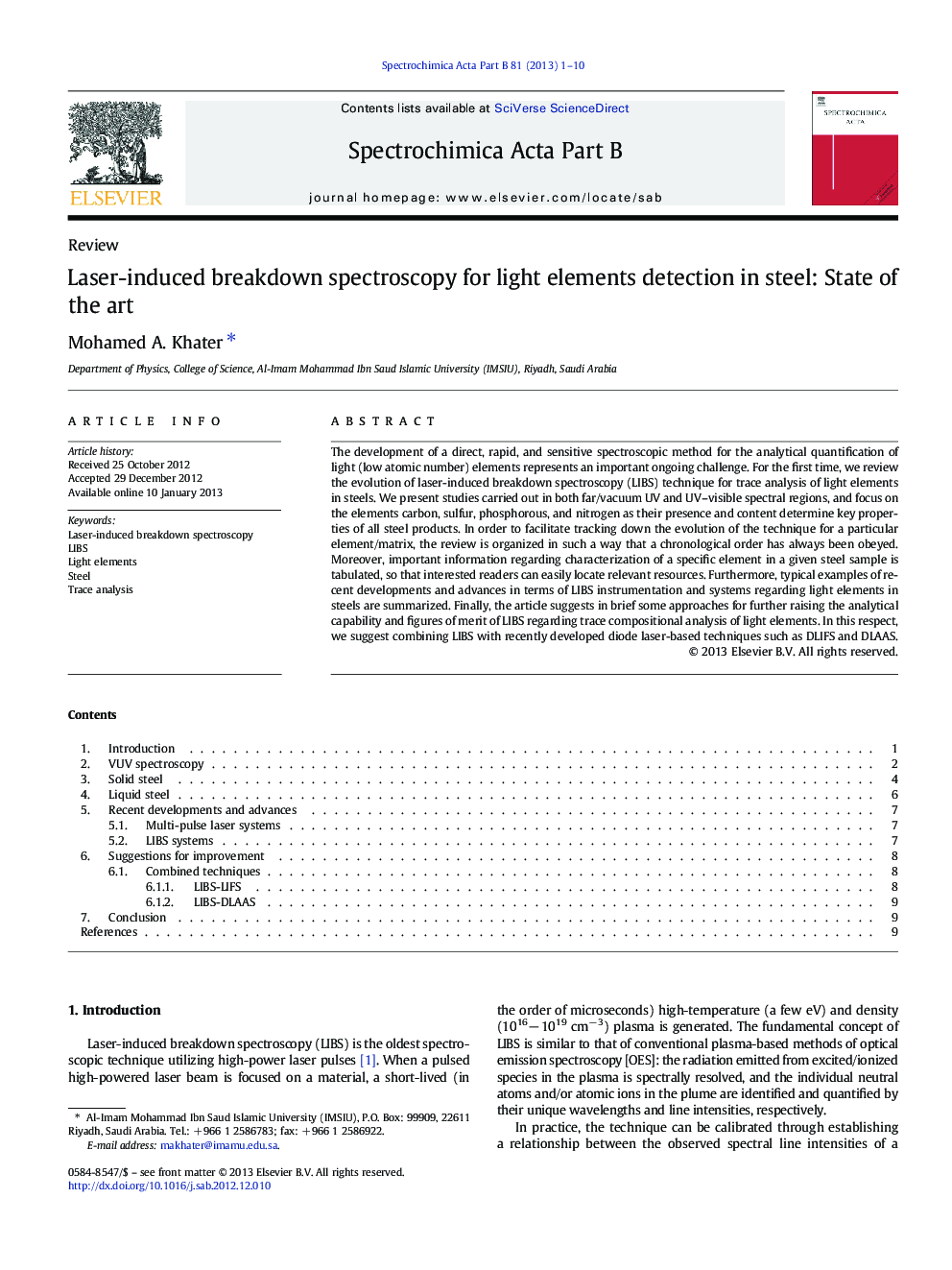| Article ID | Journal | Published Year | Pages | File Type |
|---|---|---|---|---|
| 1239720 | Spectrochimica Acta Part B: Atomic Spectroscopy | 2013 | 10 Pages |
The development of a direct, rapid, and sensitive spectroscopic method for the analytical quantification of light (low atomic number) elements represents an important ongoing challenge. For the first time, we review the evolution of laser-induced breakdown spectroscopy (LIBS) technique for trace analysis of light elements in steels. We present studies carried out in both far/vacuum UV and UV–visible spectral regions, and focus on the elements carbon, sulfur, phosphorous, and nitrogen as their presence and content determine key properties of all steel products. In order to facilitate tracking down the evolution of the technique for a particular element/matrix, the review is organized in such a way that a chronological order has always been obeyed. Moreover, important information regarding characterization of a specific element in a given steel sample is tabulated, so that interested readers can easily locate relevant resources. Furthermore, typical examples of recent developments and advances in terms of LIBS instrumentation and systems regarding light elements in steels are summarized. Finally, the article suggests in brief some approaches for further raising the analytical capability and figures of merit of LIBS regarding trace compositional analysis of light elements. In this respect, we suggest combining LIBS with recently developed diode laser-based techniques such as DLIFS and DLAAS.
► We review development of the LIBS technique for trace analysis of light elements. ► This includes recent advances in laser pulse structure and industrial LIBS systems. ► Detection of light elements by LIBS in the optical region is still difficult. ► LIBS combination with either DLIFS or DLAAS would represent a potential solution.
